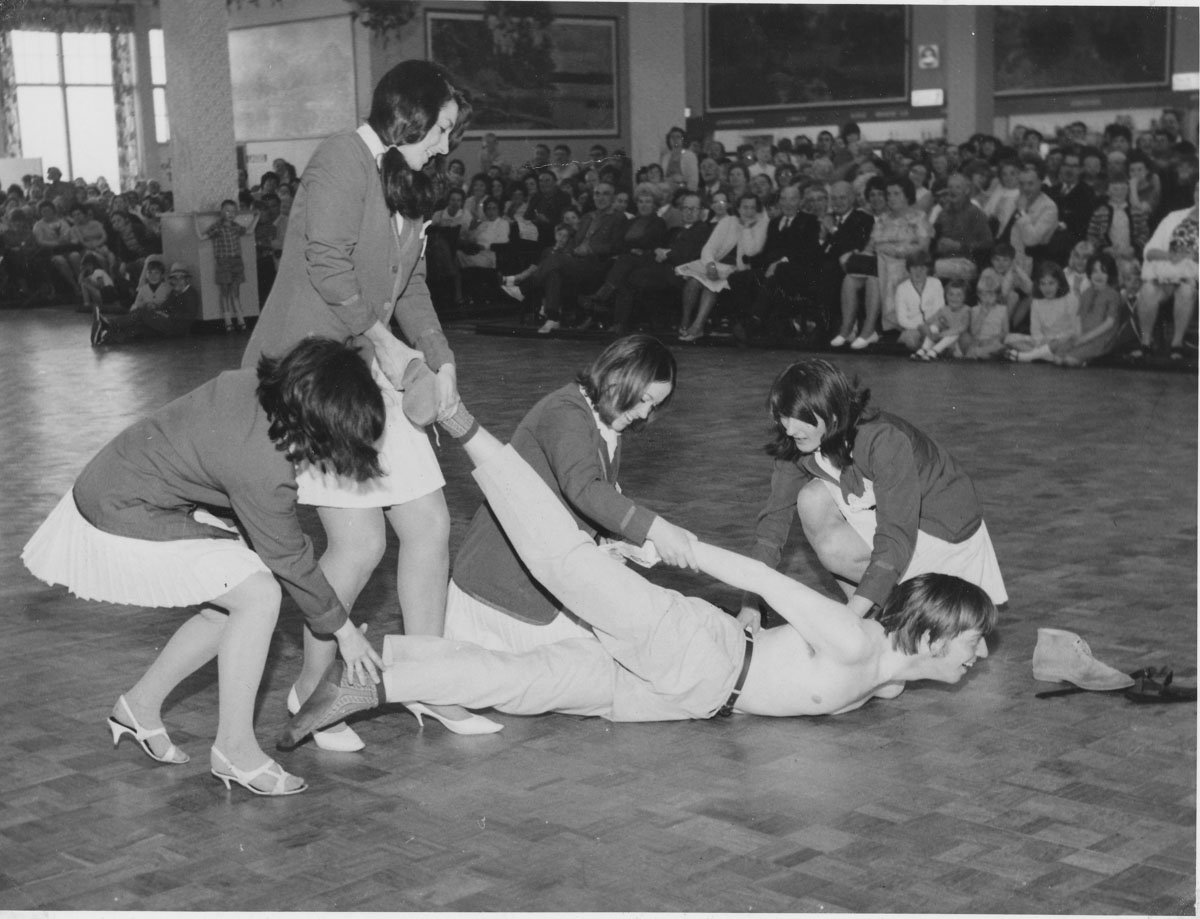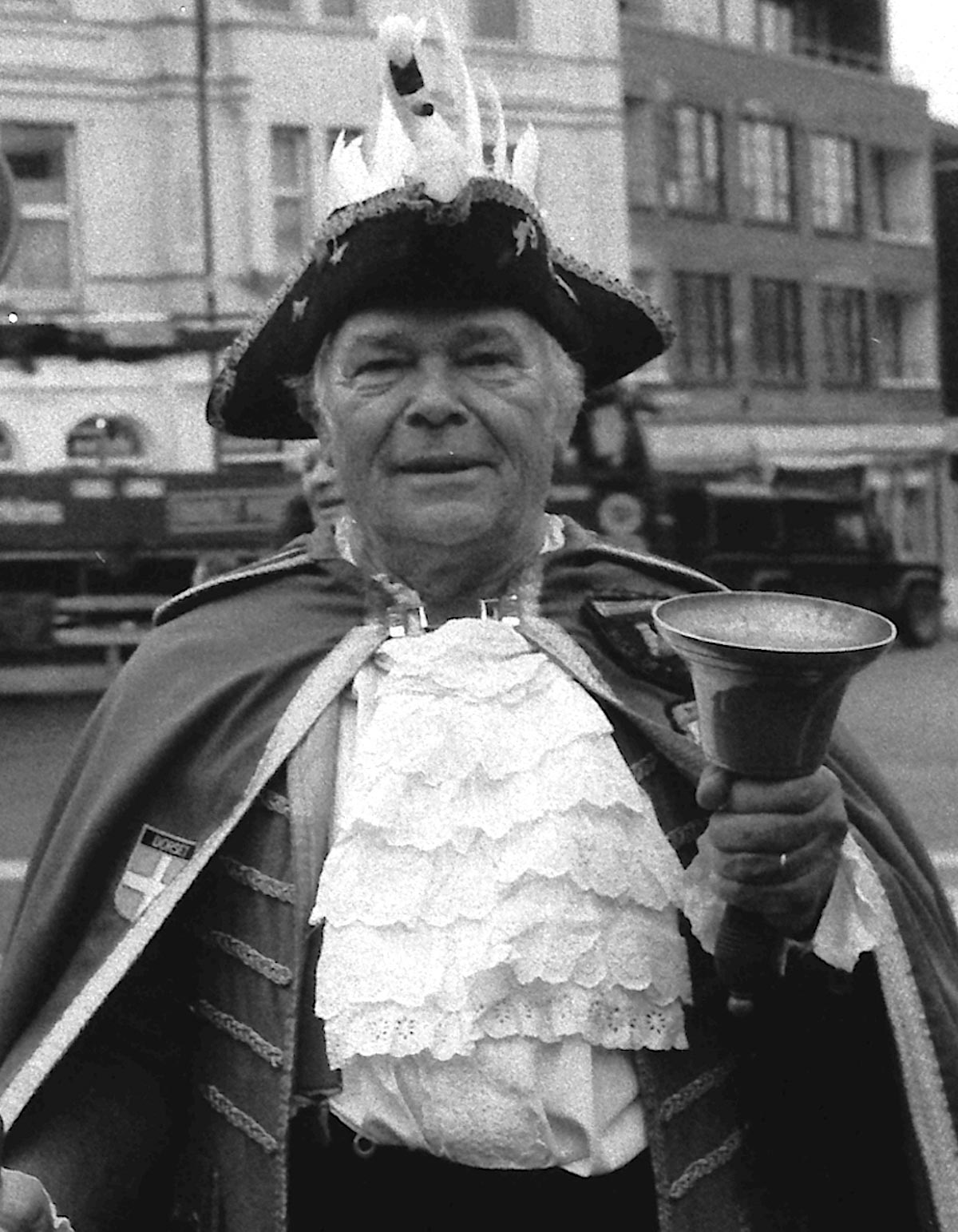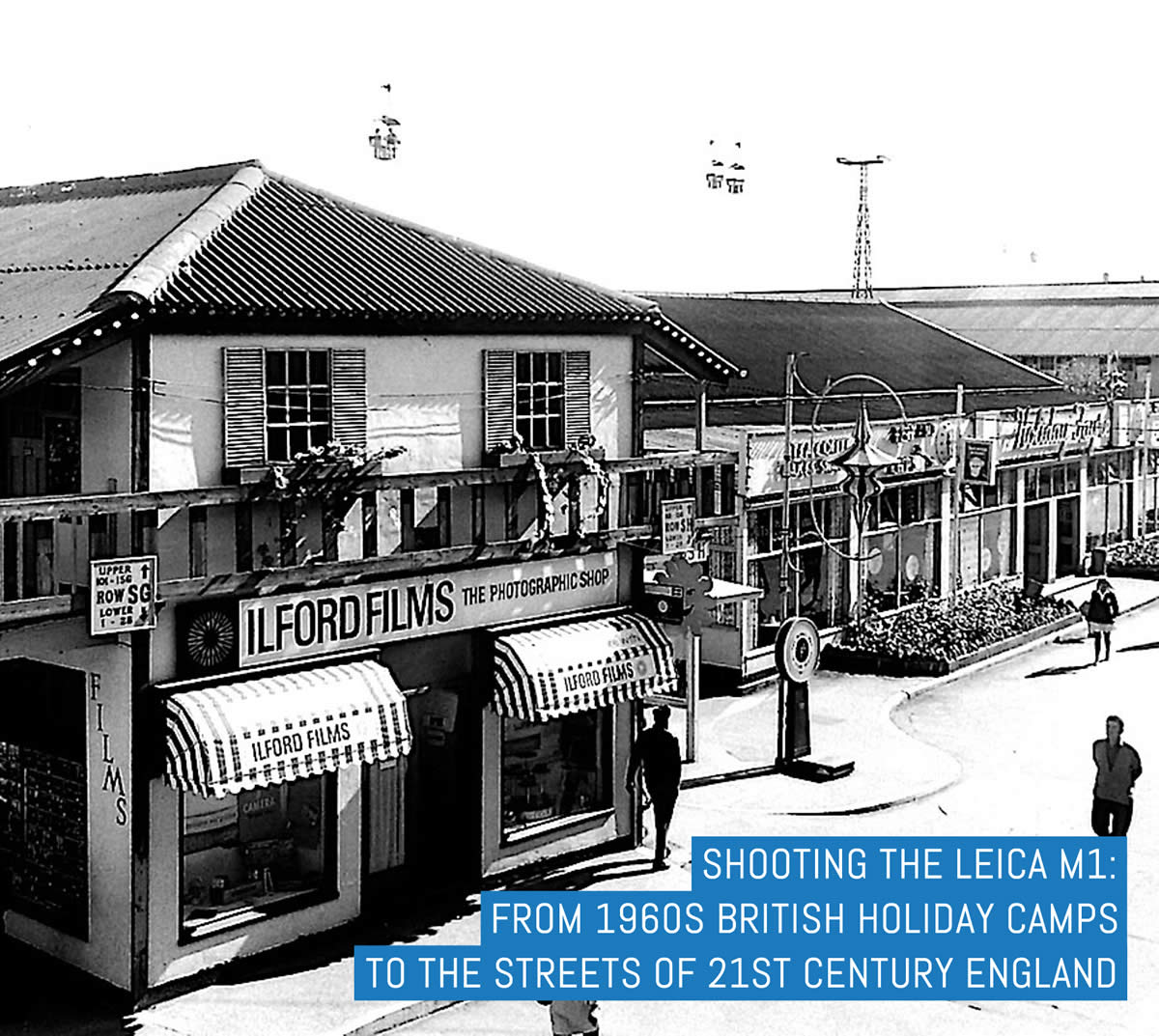I am a great fan of the Leica M1, having first used this camera in the late 1960s as a camp photographer at Butlin’s in the UK. I can safely say that for me, it has everything necessary for quick shooting and nothing that you don’t need. So before I get stuck in, let me ask you a question: was the Leica M1 actually designed to be the perfect street photography camera?
I became aware of the existence of The Leica M1 after seeing a note in Amateur Photographer’s annual listing of all cameras on the market in the early 1960s. The magazine published an annual listing of cameras for its readers to fantasise over for many years.
The M1 appeared alongside the Leica M3 and M2 but seemed to be a poor relation of both. It had no rangefinder and the viewfinder showed fixed bright line frames for 35mm and 50mm lenses. According to Leica, the M1 it was ideally meant to be used with their Visoflex reflex housing, which turned any M-mount Leica into an SLR – more on that a bit later.

As an amateur photographer in the late 1960s, the Leica M1 seemed to be an expensive alternative to the many 35mm cameras with fixed lenses and bright line viewfinders but as luck would have it, at around 20 years old, I landed my first job as a professional photographer!
The job was at Butins Holiday Camp in Skegness and to help those of you reading this who are not English, Butlin’s was is chain of large seaside holiday resorts, which first opened in the mid-1930s. It was incredibly successful during the mid-20th century and with the advent of cheap flights and even cheaper package holidays, Butlin’s might not be as big as it was once before but still operates three large camps in the UK – think of them like giant holiday towns with almost every concession you can think of available for families to enjoy.
I worked for a few seasons at Butlin’s starting in 1968, principally at the Skegness camp. My job as a “Walkie” required that I should spend my days and nights snapping holidaymakers in the streets and bars…and demanding money from them for the privilege. I think that this was in the days before the term “street photography” had been invented, but street photography it certainly was!
The important thing with all this back story is that the camera supplied for the job was a Leica M1.
It was fitted with an inexpensive Italian 35mm lens (it was, in fact, an LTM screw mount lens with an M-mount adapter). The advice from my peers was to “fill the inner frame with one or two heads and make sure that there was nothing unpleasant in the outer frame.”
Good compositional advice I think!


The film used was always ILFORD FP4 (non-PLUS) and as the sun always shone at Butlin’s, my exposures were invariably at 125th second and f/8 with focus at 10ft during the day. At night in the bars, I had the help of flash to illuminate my subjects. Helpfully, the M1 has a flash setting on the shutter dial.
In the 1960s, Butlins had a very large photographic operation — I believe that the photographic section was 50% owned by Ilford Ltd. — each camp would have an “ILFORD FILMS Photographic Shop” and the following photo staff:
Six or more “Walkie” photographers, all armed with those Leica M1s and ILFORD FP4 film. They would work all over the camp day and night and take money at the time of photographing the customer. The prints, which were 3 for 7 shillings and sixpence if I remember correctly (about £15 today), would be collected from the photographic shop a day or two later.
At least one “Colour Walkie”, a photographer who would normally have a fixed pitch and take shots on colour reversal film using a half-frame camera. The slides would be mounted into novelty keyrings and again, the photographer would take cash for these at the time of taking the photograph. In the evenings this photographer would work in the smartest bar taking pictures on colour negative film. Once again the photographer would take cash at the time of photography.
One “Press Photographer”, who would use a medium format camera (Mamiya TLR or Rolleiflex TLR), loaded with FP4 and photograph all the competition entrants and winners plus any special events. I do recall on one occasion using a Peckham Wray wide-angle camera to take some publicity shots of one of the bars. Our press photographers would also sometimes be tasked with taking “proper” press photos, such as when important visitors came to the camp. These pictures were all printed to 8×6 inches and displayed in the photographic shop windows where the campers could admire them and purchase copies from the shop.
One “Movie News” operator, who had to shoot 25-30 minutes of 16mm film each week, process and edit it and have it shown in the camp cinema every Friday morning.
To back this up, there was a large darkroom operation on each camp. At Skegness, there were two full-time printers, a full-time B/W film processing technician and a colour reversal processing technician. At the back of the camp was the darkroom and office which were inside the building behind the water tank (see below). As you can imagine, given the amount of film and paper processing, water consumption was pretty substantial.


Colour negative processing and printing were all dealt with in a well-established lab based at the Bognor Regis camp. As you can imagine, life for photographers was fast-moving and demanding especially as all the photographers (except Movie News) were paid on commission! I think that tucked away at Photo HQ in West London and scattered around the camps were a good number of pieces of photographic exotica!
In use, the Leica M1 has a bright, clear viewfinder (with those fixed 35mm and 50mm framelines) and framing was easy: I would fill the outer 35mm frame for full-length “walking” pictures in portrait orientation and take group pictures in landscape format. For portraits, I would, two heads would easily fill the 50mm frame for the more intimate close-up shots, which left a margin for error with the 35mm lens attached.
Since all pictures were machine printed with no cropping or resizing, the photographer (yes, me!) had to get it right. The holiday camps at that time were busy – this was before the term “staycation” had been invented. You also had to work fast and take hundreds of pictures if you wanted to earn a living. Butlin’s must have owned a substantial number of these cameras, given the number of camps they operated and the significant number of photographers on each camp.
I worked at Butlin’s for a few years, eventually trying my hand at each of the “disciplines” the job allowed and very quickly learned that the Leica M1 was both a reliable and accurate tool. I could take pictures quickly, accurately and with confidence.
After the Butlin’s experience I drifted through a range of photographic worlds working for a few commercial photographers (weddings, babies, dogs etc.), did some work in education as a technician and teaching, and some work in more specialised fields mainly high-speed photography and cinematography.
In the late 1970s, some time after I moved on from “street photography” of this kind, I noticed that one of the old photo discount companies — I think it was A W Young — advertising used M1 cameras, many with none working viewfinders. I suspect that these were the former Butlin cameras as they had a very hard life often being severely abused in daily use.



A couple of years ago, I found a dealer offering an M1 at a very attractive price and I snapped it up. I was delighted to find that it was in excellent condition and worked perfectly. The viewfinder was as bright and clear as I remembered and it is a camera that is ideal for use with a small, modern Voigtlander Color Skopar 35mm lens prefocussed at about 10ft – the street is your oyster!











At the time I happened to have an Elmar 50mm f/2.8 Elmar lens, which it turns out is also an excellent companion for the M1. Indeed I think that in the 1960s, this was the “kit lens” normally supplied with the M1 and with the Elmar collapsed, the camera fits into a pocket and can be taken anywhere.
For those of you wondering about the kinds of results the Leica M1 can produce with the Visoflex attached, here are a few frames which I hope satisfy your curiosity:



If I am feeling in a more serious photographic mood, I fall back on an old Leica M3 with a 50mm f/2 lens where the M3’s rangefinder can earn its keep and of course, the M3 has that nice single 50mm frame in the finder!
In use, the Leica M1 is quiet and unobtrusive. Having no automation of any kind, you can quickly get on with the business of taking pictures. It is an irony of modern photography that even “simple” cameras have countless buttons and modes of operation to confuse and perplex the photographer.
For me, the M1 is the camera for snappers.
~ John
Share your knowledge, story or project
The transfer of knowledge across the film photography community is the heart of EMULSIVE. You can add your support by contributing your thoughts, work, experiences and ideas to inspire the hundreds of thousands of people who read these pages each month. Check out the submission guide here.
If you like what you’re reading you can also help this passion project by heading over to the EMULSIVE Patreon page and contributing as little as a dollar a month. There’s also print and apparel over at Society 6, currently showcasing over two dozen t-shirt designs and over a dozen unique photographs available for purchase.








16 responses to “Shooting the Leica M1: From 1960s British holiday camps to the streets of 21st century England”
Fascinating memories but street photography surely goes back almost to the dawn of the medium, at least the twenties and thirties. I started out in the early seventies, with a borrowed Praktica, progressing to a Mamiya twin lens 6×6 and finally a Pentax 35mm SLR. Leicas and Hassleblads were the stuff of legend. I finally got my Leica, a digital Q, and I certainly don’t miss the hassles of a bedroom darkroom and developing in the bath.
Good to hear that press pictures were still being taken in black & white even in 1980. taking these was probably my favourite job in the years that I worked on the camp. Yes the films were developed in those submarine tank. As I remember they were filled with Microphen developer and replenishment was simply by adding fresh developer whenever the level got near the top of the films. Development was for ten minutes then the darkroom light was switched on and the films were lifted out and transferred to the fixing tank in with the white light on(no safelight in the darkroom. This always seemed to work with no fogging, but may explain why grade three paper was the norm!
Like you I worked at Butlins, but Filey, in 1980. They were still using the M1 then, but the main camera was the Practica LTL (as so few had seen a Leica let alone used rangefinder style). Also everyone used Pen EE with bulk loaded Barfen E6.
B&W was by then press only – on Ilford grade3 – and film processed in 10 gallon tanks (WW2 submarine battery cases that were exactly the right length for 120 film to hang from a bar on a clip with no spiral) but not enough chemistry to replenish so by the end of the season it was developed for a couple of hours and was still a bit mily after fixing overnight!
Wonderful story, I read it with great joy. Great images! You definitely have an eye for the right moment. Thank you so much for sharing.
I’m with you all the way on the M1. In 1969 I set off for five months in South America with a Canon Reflex (85-300 zoom) and my M1. I carried it zone-focused on a wrist strap; the lens was the so-called “Winogrand” 28mm F2.8 Canon LTM, Of course, I had to use a separate 28mm view finder, In the end, when I’d sorted out all the “bricks” of Ektachrome X I’d
burned through, 75 per cent of the pix were from the good old M1. I still have the lens — painted black by Peter Grisaffi in Luton to match my button-rewind M2.
The best photographic technique and photo nostalga article I have ever read – Thank You: John
What an interesting story of holiday camps. Being in USA, I did not know about these resorts. A somewhat similar institution existed in the “Borsch Belt”, summer camps and hotels in the Catskill mountains of New York for Jewish patrons. Photographers recorded games, dances, and sports, as well as liaisons between young ladies and their future lawyer – physician – stockbroker husbands.
Hi Kodachromeguy!
My late father-in-law was the manager of a Ukrainian resort in the Catskills. I met his daughter while I was teaching in West Haven CT. Being of Italian-Irish decent, I knew nothing about these resorts. So, I married his daughter 39 years ago! The Ukes let me in. It’s been a wonderful life.
Great piece John. Very interesting and so nostalgic for me. We lived in Cleethorpes for a few years, just up the Lincolnshire coast, a few years after your time at Skeggie and a day pass was a good day out with the children. We rode the cable car shown in your shot of the Ilford shop. The mono-rail, which came a little after your time had broken down so we couldn’t ride that.
This was a delightful article, extremely well written, and illuminating of an era of the UK those of us who grew up elsewhere know nothing about. Thank you, John!
Thoroughly enjoyed the article. Heard of Butline’s, but never knew of the history.
Thanks.
Love this article – thanks for providing this fascinating piece of history.
Hello John,
Did this article appear few weeks ago in a much shorter version? I much prefer this longer and interesting version!
What a hoot it must have been to work at these resorts in the 1960’s. It sounded like hard work, but if you’re young and armed with a camera it had to be a great experience.
Someone made a thoughtful decision to equip the photographers with Leica’s. And, the film processing and printmaking labs at your disposal; almost heaven.
In the 1970’s, I was in college studying to become a graphic teacher, I worked in the graphics lab and it was our job to process the film from various departments throughout the campus. I remember the library had a M1 with the viso attachment. It was mounded on a jury-rigged device to photograph manuscripts. They used Kodak Ortho film in 35mm cassettes. We processed the film in Kodalith A & B developer in 35mm stainless tanks. The work was carried out under red safelights. We’d let the film dry, retouch dust spots with red opaque and mount the frames in cardboard mounts. The library underwent a massive renovation the year I graduated. I suppose the camera was either tossed out or ‘midnight appropriated.’ Who knows.
I checked the prices on eBay…they’re not that inexpensive!
Your street shooting kit is sublime and so effective! The pub photo with hands on chins is my favorite. Good shooting, keep safe!
-Dan
Hi Dan, you must be thinking about John’s “5 Frames…” from the end of March: https://emulsive.org/articles/5-frames/5-frames-on-ilford-hp5-plus-ei-400-35mm-format-leica-m1-by-john-tarrant 🙂
Fascinating article. Sounds like a great way to get very familiar with your kit very quickly. I’m thinking Hi De Hi too.
What an interesting article. I have iiic which can be fiddly to use. I think I will just use the Sunny 16 rule and set the focus at 10ft. Sounds foolproof.